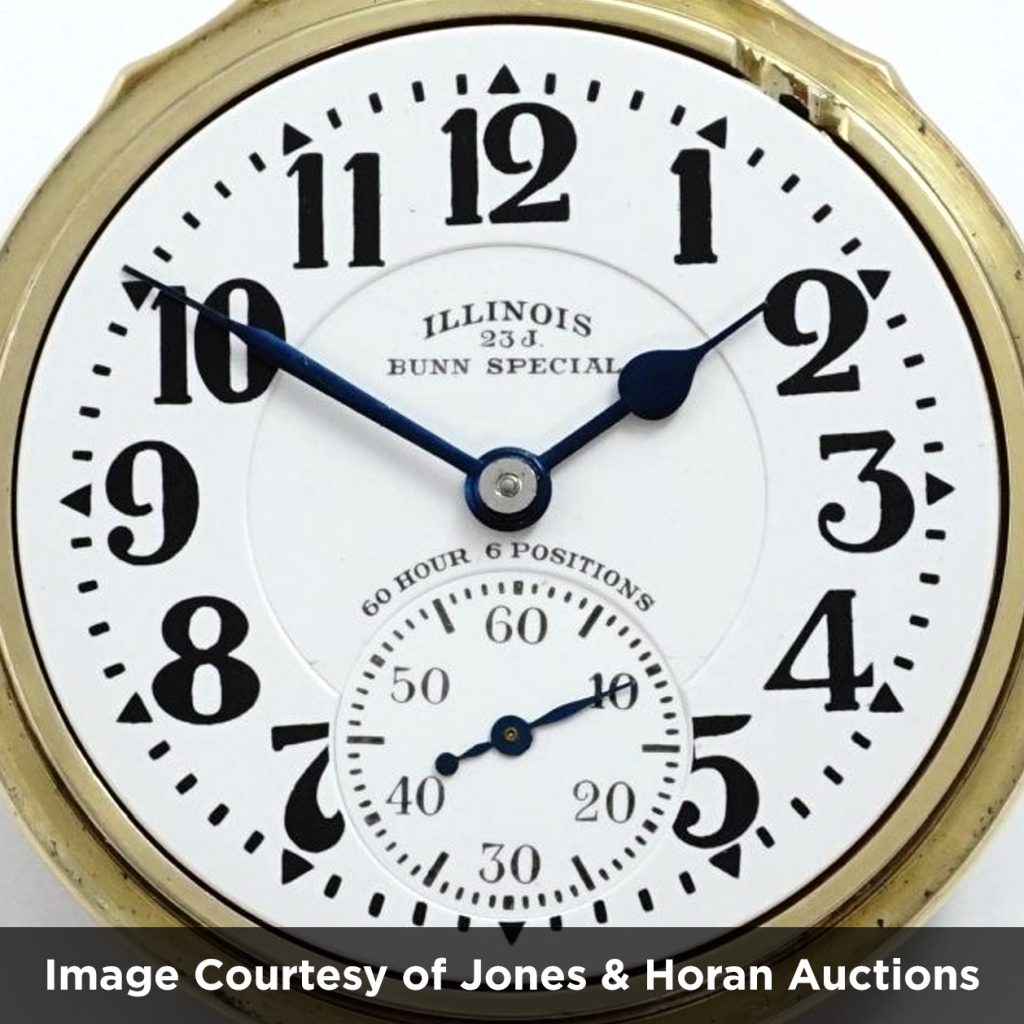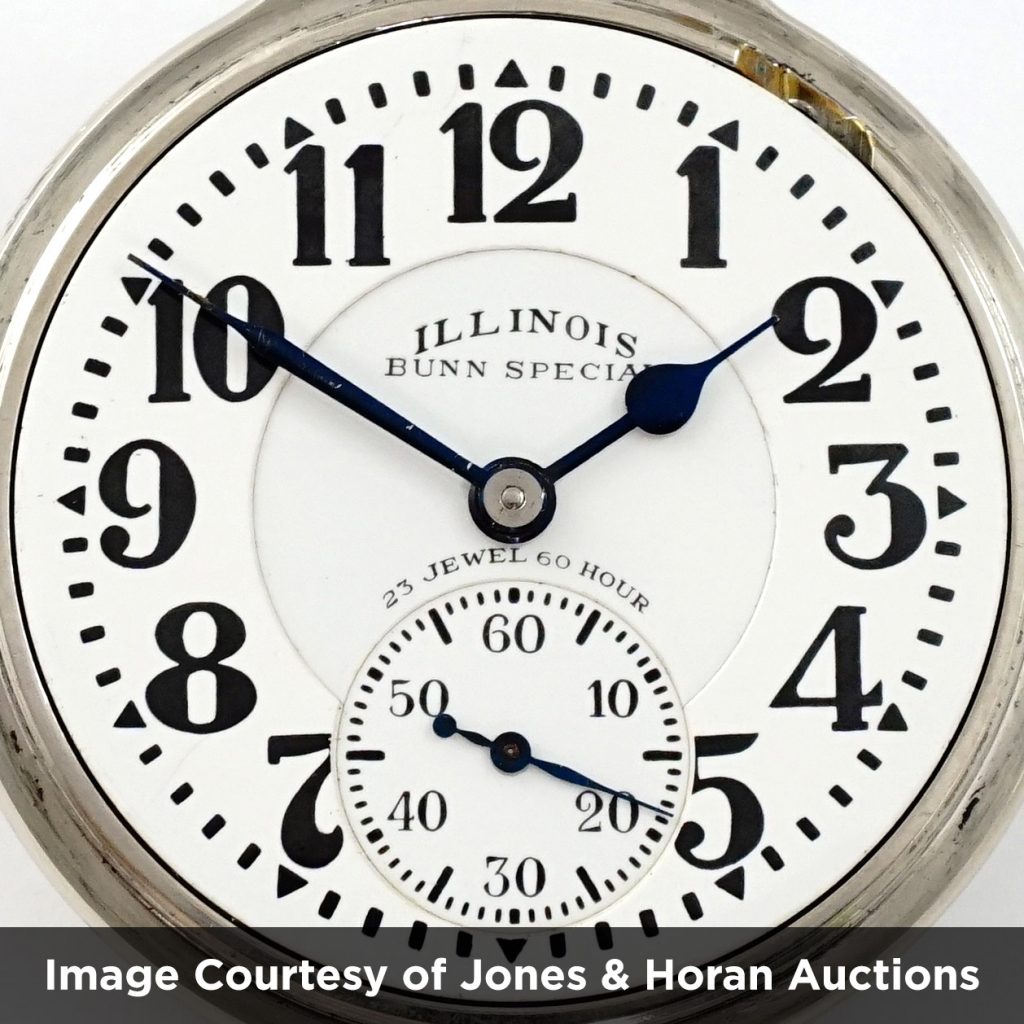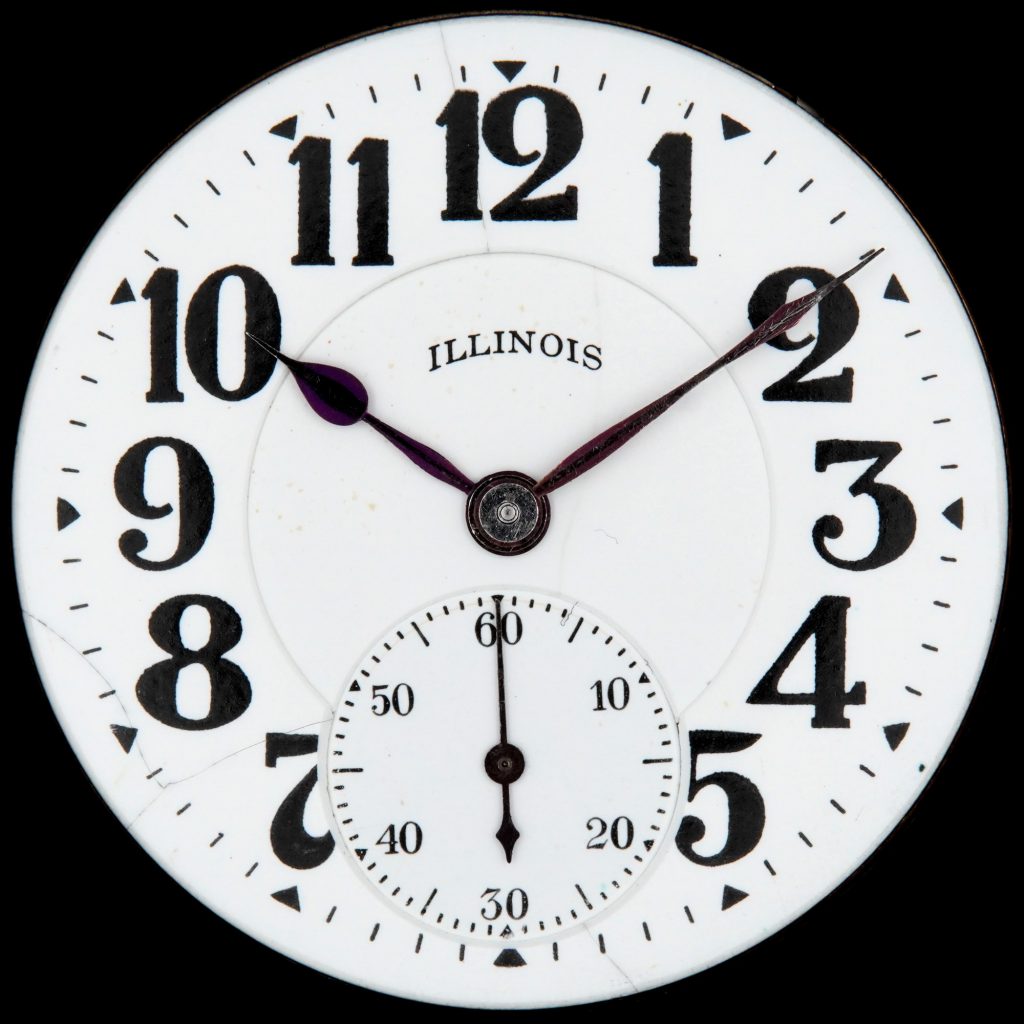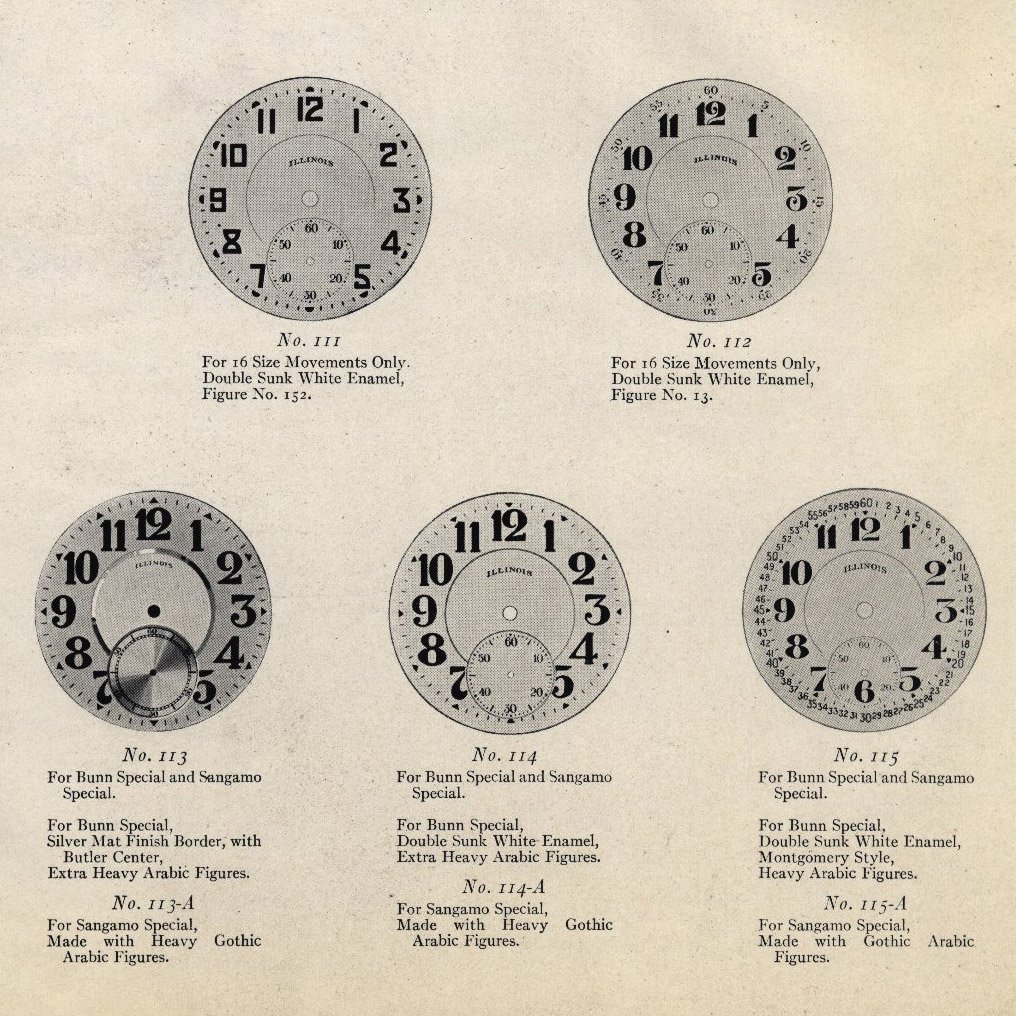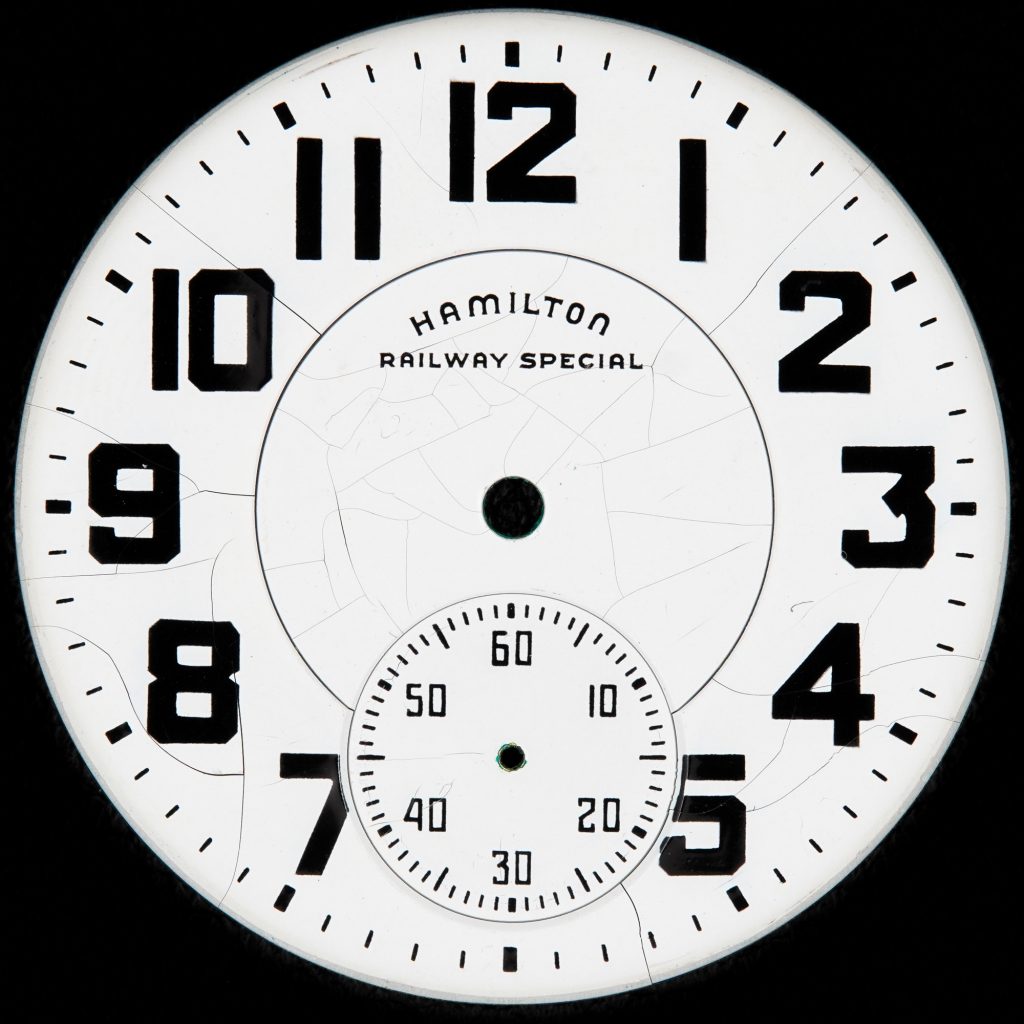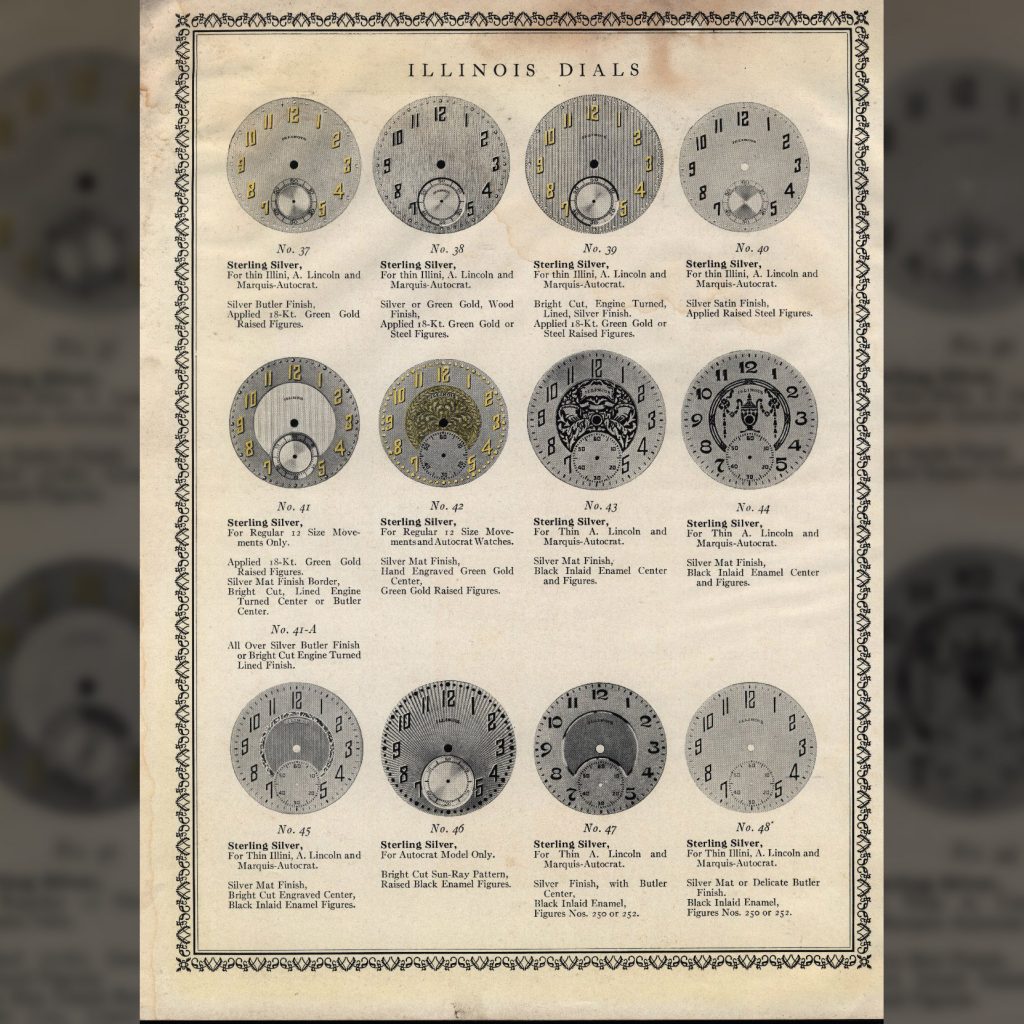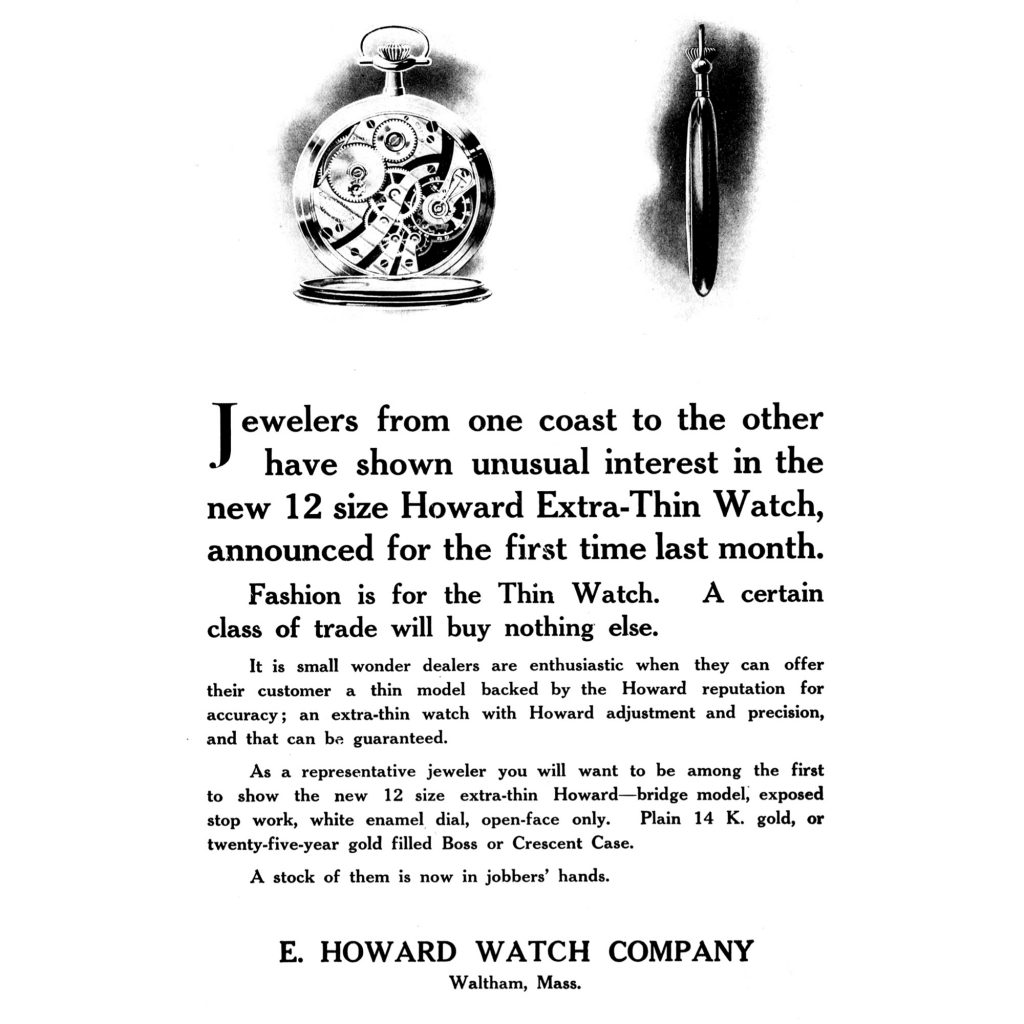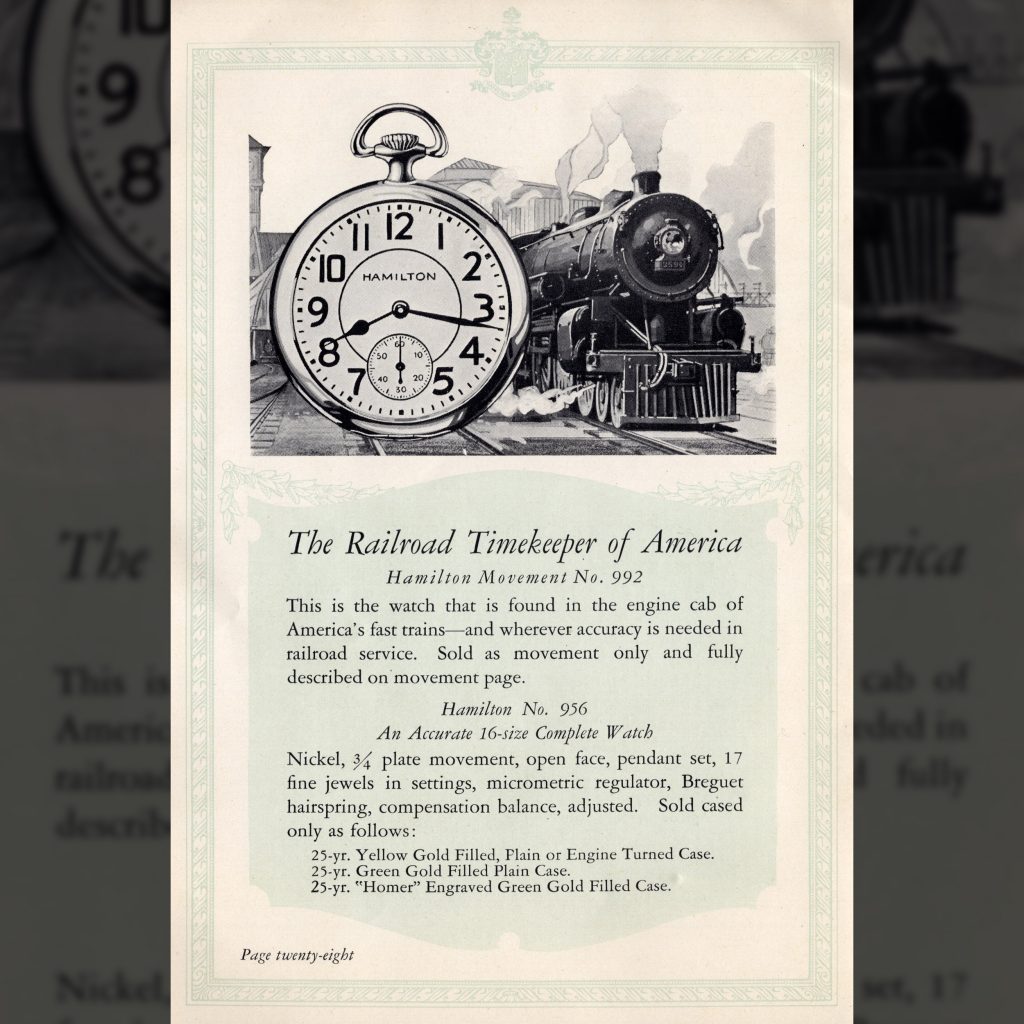
Enamel Dial

Pictured: Illinois Watch Company “Flying J” Bunn Special Dial (Image courtesy of Jones & Horan Auctions) During the “Hamilton Era,” the Illinois Watch Company also furnished dials with markings promoting.
Pictured: Illinois Watch Company “23 Jewel 60 Hour” Bunn Special Dial (Image courtesy of Jones & Horan Auctions) During the “Hamilton Era,” the Illinois Watch Company also furnished dials with.
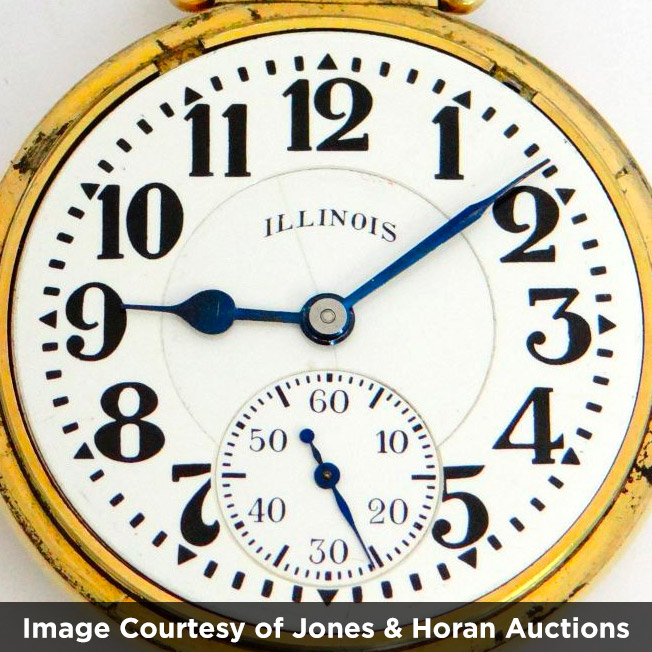
Pictured: Illinois Watch Company Railroad Dial No. 114 (Bunn Special Dial), c.1922 The Bunn Special represents the most iconic railroad watch offered by the Illinois Watch Company. The No. 114.
Pictured: Illinois Watch Company 16-Size Dials, 1927 Catalog During the 1920s, the market trend favoring metal dials increased even though brilliant white enamel dials still dominated the railroad industry. This.
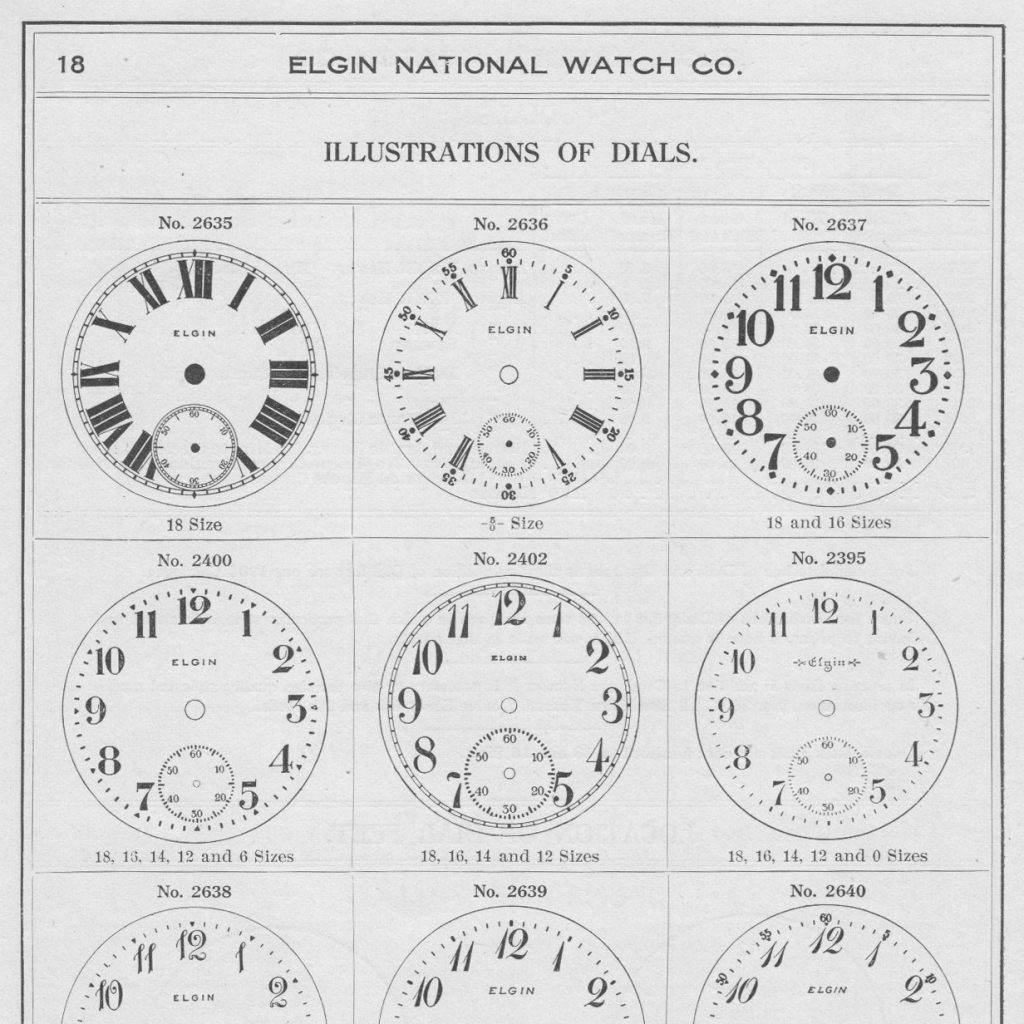
Pictured: Hamilton Watch Company Melamine Dial Showing Cracks, c.1952. In October 1946, the Hamilton Watch Company began manufacturing watch dials using melamine, a thermoplastic material that had recently been commercialized..
Pictured: Excerpt from the Illinois Watch Company Dials Circular No. 102, Published May 1927 By the 1920s, metal dials were quickly becoming the standard option on the majority of American.

